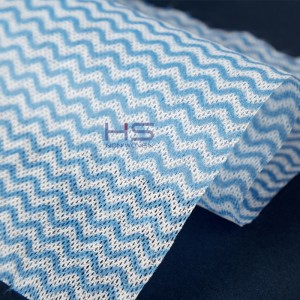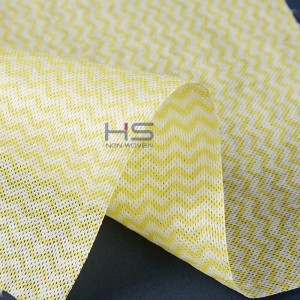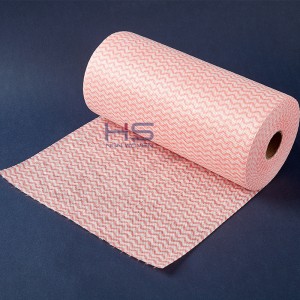Nonwoven truly is an amazingly flexible range of materials. Let us guide you through the nine most common nonwovens used in the production industry.
1. FIBREGLASS: Strong and Durable
With its high tensile strength and low elongation, fiberglass is often used as a stabilizer, particularly in construction products.
Fiberglass is inorganic, water resistant and doesn’t not conduct electricity making it ideal for construction and, in particular, for wet room areas that are exposed to moisture. It can also withstand harsh condition such as sun, heat and alkaline substances.
2. CHEMICALLY BONDED NONWOVEN: Soft and Gentle on the Skin
Chemically bonded nonwoven is a collective term for various types of nonwoven material, with the most common being a mixture of viscose and polyester that has a very soft feel making is ideal for skin close products such as wipes, hygienic and healthcare disposable products.
3. NEEDLE PUNCHED FELT: Soft and Environmentally Friendly
Needle punched felt is a soft material with a high level of air permeability making a common. It is often used as a stronger replacement for spunbond or as a cheaper alternative to fabric in furniture. But it’s also used in different types of filter media and it can be moulded into different shapes, for example car interiors.
It’s also a nonwoven that can be produced from recycled material.
4. SPUNBOND: The Most Flexible Nonwoven
Spunbond is a durable and very flexible material where many properties can be controlled. It’s also the most common nonwoven on the market. Spunbond is lint-free, inorganic and repels water (but it can be changed to allow liquid and moisture to permeate or be absorbed).
It is possible to add flame retardants, make it more UV resistant, alcohol resistant and antistatic. Properties such as softness and permeability can also be adjusted.
5. COATED NONWOVEN: Control Air and Liquid Permeability
With coated nonwoven you are able to control air and liquid permeability, making it great in absorbents or in construction products.
Coated nonwoven is usually made from spunbond which is coated with another material to create new properties. It can also be coated to become reflective (aluminium coating) and antistatic.
6. ELASTIC SPUNBOND: A Unique Stretchy Material
Elastic spunbond is a new and unique material developed for products where elasticity is important, such as healthcare products and hygiene items. It’s also soft and skin friendly.
7. SPUNLACE: Soft, Stretchy and Absorbing
Spunlace is a very soft nonwoven material that often contains viscose to be able to absorb liquid. It is usually used in different types of wipes. Unlike spunbond, spunlace gives off fibres.
8. THERMOBOND NONWOVEN: Asorbing, Elastic and Good for Cleaning
Thermobond nonwoven is a collective term for nonwovens that are bonded together using heat. By using different levels of heat and different types of fibres, you can control the density and permeability.
It’s also possible to create a material with a more irregular surface that is effective for cleaning as it easily absorbs dirt.
Spunbond is also bonded using heat but a distinction is made between spunbond and thermobonded nonwoven. Spunbond uses infinitely long fibres, while thermobond nonwoven uses chopped fibres. This makes it possible to mix fibres and create more flexible properties.
9. WETLAID: Like Paper, but More Durable
Wetlaid allows water to permeate, but unlike paper it is water resistant and does not tear apart like paper does upon contact with water. It is stronger than paper even when it is dry. Wetlaid is often used as a replacement for paper in the food industry.
Post time: Jul-29-2022



